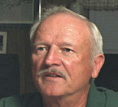|
David Gilman Impacts of Cattle on Soil of the American West His experiences growing up on a Vermont farm fostered a desire in David Gilman to pursue a college degree that would allow him to help farmers. Consequently, at Utah State University he pursued coursework in soils and meteorology. After receiving his bachelor of science degree in 1968, he mapped soils for the USDA Soil Conservation Service (currently the Natural Resources Conservation Service) in Woodstock, Vermont before becoming a soil scientist on the Targhee National Forest (Idaho) (currently the Caribou-Targhee National Forest) in 1974. The following year he became the zone soil scientist for the Challis (currently the Salmon-Challis National Forest) and the Sawtooth National Forest, a position that gave him the responsibility for insuring protection of the soil against any disturbance. When every national forest was subsequently assigned its own soil scientist, Gilman remained in that position on the Sawtooth until his retirement in 1994.
In this video, David Gilman explains how cattle grazing in the American West has led to soil erosion and soil compaction which have reduced the productivity of the soil.
Recorded in August 2003. This video is an excerpt from David Gilman’s interview in Western Turf Wars: The Politics of Public Lands Ranching. |
